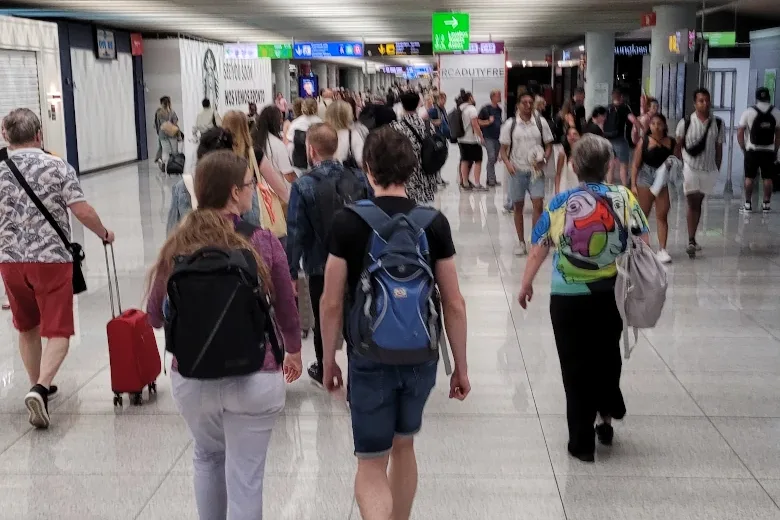
Palma airport (Son Sant Joan) closed 2024 with a record-breaking total of 33,298,164 passengers, reflecting a 7% increase compared to 2023. This growth marks last year as the busiest period in the airport’s history, according to Aena, the company managing Spain’s main public airports.
Growth in domestic and international flights
International flights drove growth at Son Sant Joan, with 24,225,720 passengers, a 7.8% increase over 2023. Meanwhile, 9,058,246 passengers travelled on domestic routes, up 5% from the previous year.
Operationally, Palma Airport handled 243,200 flights, an increase of 6.2% compared to 2023, setting a new record for aircraft movements.
December 2024 results at Palma airport
In December 2024, the airport welcomed 1,082,512 passengers, a rise of 4.2% from December 2023. A total of 9,573 flights were recorded, up 2.8%. Of these passengers, 656,123 travelled on domestic flights (+1.1%), while 426,254 (+9.4%) flew internationally.
Global performance of Aena Group
Aena’s airports closed 2024 with a total of 369,444,029 passengers, an 8.5% increase compared to 2023. Additionally, they handled 3,203,747 aircraft movements (+7.1%) and transported 1,421,640 tonnes of cargo, up 18.1% year-on-year.
In December, the Aena Group airports recorded 26,925,911 passengers (+7.2%), 239,377 aircraft movements (+5.7%), and 124,571 tonnes of cargo (+11.5%).
Strategic investments for the future
Aena is preparing investments as part of the Airport Regulation Document (DORA) 2027-2031, aimed at scaling infrastructure to meet future demand. This approach follows technical criteria to ensure sustainable growth across aviation, economic, and environmental dimensions, fostering prosperity and job creation in the regions served.
These investments will be discussed in a regulated process involving airlines, the National Commission for Markets and Competition, and the Directorate-General for Civil Aviation. Final proposals will be incorporated into Aena’s investment plan following consultation with Airport Coordination Committees, which include regional and local governments alongside economic and social stakeholders.







Leave A Comment